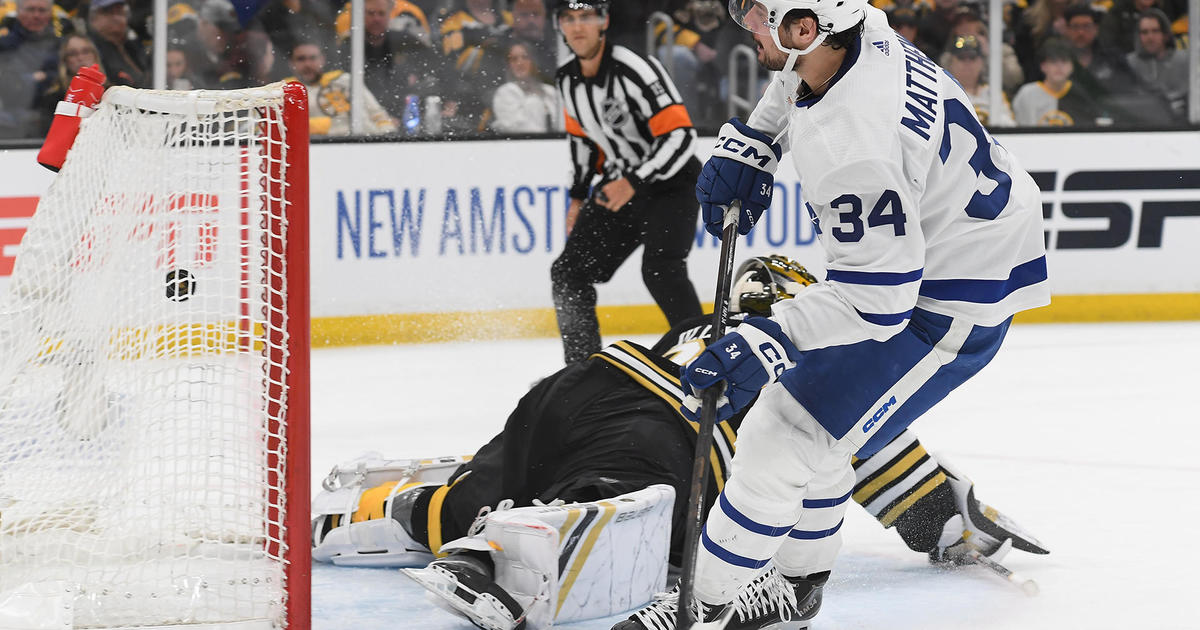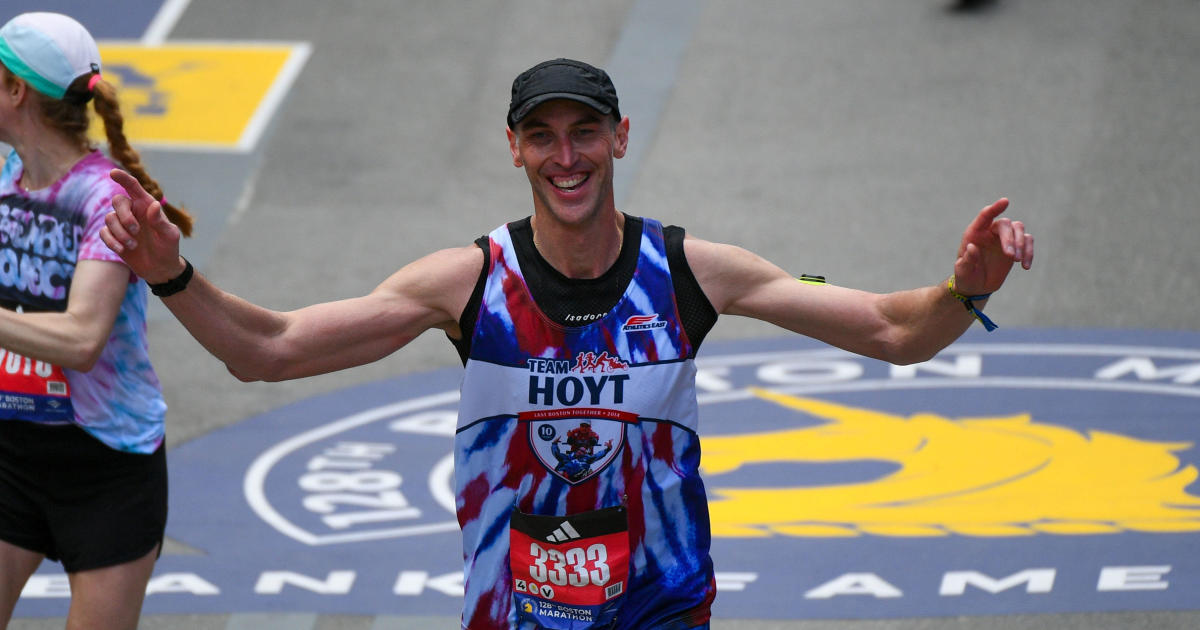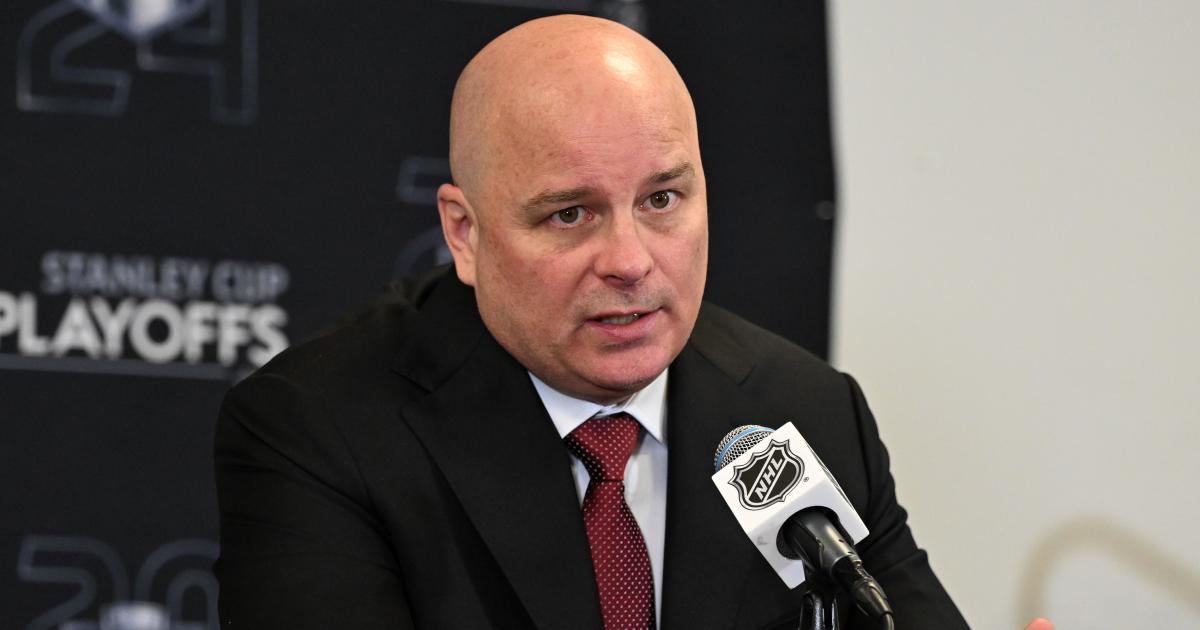NFL Did Indeed Experiment With Hearing Aids In 1999, 2000
By Michael Hurley, CBS Boston
BOSTON (CBS) -- Earlier this week, former Colts offensive lineman Tarik Glenn generated a minor stir when he said in an interview that he and other Indianapolis linemen used to wear hearing aids to help block out the crowd noise and isolate the pre-snap call of quarterback Peyton Manning.
A few days later, some details have become available from the man who actually helped implement the devices in the NFL.
Michael Marino, who owns Southwester Hearing Centers, said he and his son thought of the idea while watching a game in St. Louis. He then helped Starkey Industries develop a "noise eliminator" -- a custom-made hearing aid "that would eliminate background noise" and help isolate voices on a certain frequency.
"They worked very well," Marino said Friday over the phone from Missouri. "They worked pretty good. The only problem [the players] had is sometimes they got hit pretty hard and one of them would fall out."
Marino said he first proposed making the custom hearing aids for the St. Louis Rams in 1999. An article from the St. Louis Post-Dispatch archives on Dec. 7, 1999, explains that the Rams were planning on using them for against the Titans in 1999, but after the devices received some media attention, Jeff Fisher complained. The devices were banned for that game. Titans fans reacted by bringing an extra level of noise, forcing eight false starts from the Rams. The Titans won, 24-21.
However, according to the Post-Dispatch, the NFL dropped the ban after that game on the "noise eliminators," because they "neither transmit nor interfere with electronic signals."
The Rams went on to win the Super Bowl at the end of that 1999 season. They defeated Fisher's Titans.
(A more recent story from the St. Louis Post-Dispatch also shares some details of that situation in 1999 and how Fisher's complaint helped boost the Rams-Titans rivalry.)
The following year, the NFL adopted a trial program for the hearing aids in the preseason. The St. Louis Business Journal detailed the trial run in 2000, noting that seven teams had signed up to try out the devices. Marino said the Colts were one of those teams.
After the preseason trial run ended, the NFL chose not to adopt a specific policy on the devices. But Marino said that the custom-made pieces were not collected. Instead, players who had them were allowed to keep them.
"A lot of [the players], they absolutely loved them," Marino said. "So some of the players may have kept them, I don't know. I can't tell you anything like that. But it was legal during the preseason, and a lot of them got left with [the players].
"Once they're made and they're custom-made for each football player's ears, they had to take an impression of the ear. You couldn't just give them something to stick in their head," Marino continued. "So, whether or not they kept them up there or not, or used them, I don't know. I can't tell you whether or not that happened. I doubt it, because they'd probably get caught with it. But needless to say, it was there and it was allowed in '99 [and the 2000 preseason] to be tried."
Marino explained that the devices were not visible to any spectators.
"No, you wouldn't see it. It was completely in their ear. Right down the canal," he said. "There was nothing over their ear. These things were custom-made to go down into their canal.
"If somebody used it on the field, who knows? You know, it's just a matter of whether they get caught with it. And it would be hard to get caught with it."
As for the Colts, Marino said he did not work with Manning directly, and that even if the Colts' linemen continued using the devices, it's possible that Manning was not even generally aware of the operation.
"I mean, they could've been using them and [Manning] wouldn't even know. It's a possibility," Marino said. "I don't think he did it deliberately, that's for sure, but it was in preseason. I do know that for a fact."
Ultimately, Marino said, the players liked the devices, "yet the teams and the managers and the coaches objected to it."
Glenn's memory of the specific time period might be slightly off (he said the Colts might have used the devices in 1998), just as Marino's memory of specific dates required some adjusting based on the archived news articles.
So, were the "noise eliminators" legal in the NFL? Yes ... for a certain period. After that, there was apparently no specific rule against it. Even if a rule did exist, short of an inner-ear inspection of every player, it would have been awfully difficult to enforce.
You can email Michael Hurley or find him on Twitter @michaelFhurley.



